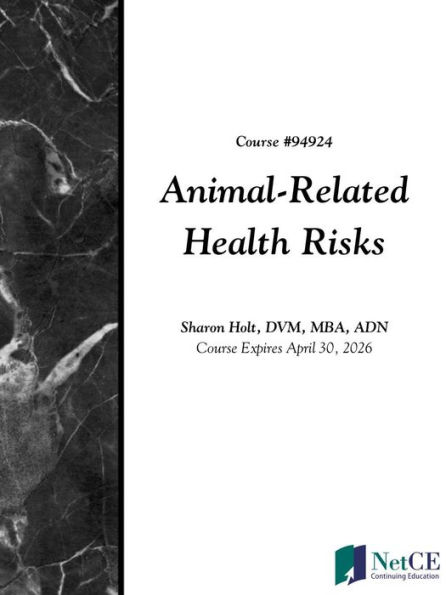The purpose of this course is to increase the awareness of zoonotic diseases and their management in both prevention and care. There are many potential diseases that can spread from animals to humans, and with basic precautions, most zoonoses are preventable or at least avoidable. The public has many misconceptions about what to do after a potential exposure to a zoonotic source, and healthcare professionals are often the first to help and answer questions. In addition, members of the public may use this course to enhance their personal knowledge of the subject matter presented.
Upon completion of this course, you should be able to:
1. Reflect on the history of zoonotic diseases.
2. Define the hosts and host characteristics associated with zoonotic diseases.
3. Compare the types of vectors and transmission of zoonotic diseases.
4. Discuss the classification of zoonotic diseases.
5. Identify the common pathogens involved in the spread of infection from animals to humans.
6. Discuss the clinical presentation, diagnosis, and treatment of Lyme disease.
7. Outline characteristics and treatment of other tickborne zoonotic diseases, including tularemia, Rocky Mountain spotted fever (RMSF), and ehrlichiosis.
8. Discuss the clinical presentation, diagnosis, and treatment of West Nile virus infection.
9. Describe the characteristics and treatment of other viral zoonotic diseases, including avian influenza.
10. Discuss the background, clinical presentation, and prevention of bovine spongiform encephalitis (BSE) and its resulting disease in humans, variant Creutzfeldt-Jakob disease (vCJD).
11. Identify some of the common protozoal zoonotic diseases.
12. Describe the characteristics and treatment of anthrax infection.
13. Identify other common bacterial zoonotic diseases, including cholera.
14. Recall the characteristics of common parasitic zoonotic diseases and appropriate treatment.
15. Outline the role of an interpreter in treating non-English-proficient patients.
This 15-hour continuing education course is available for download for professional development; if continuing education credit is desired, please see instructions included in eBook.



